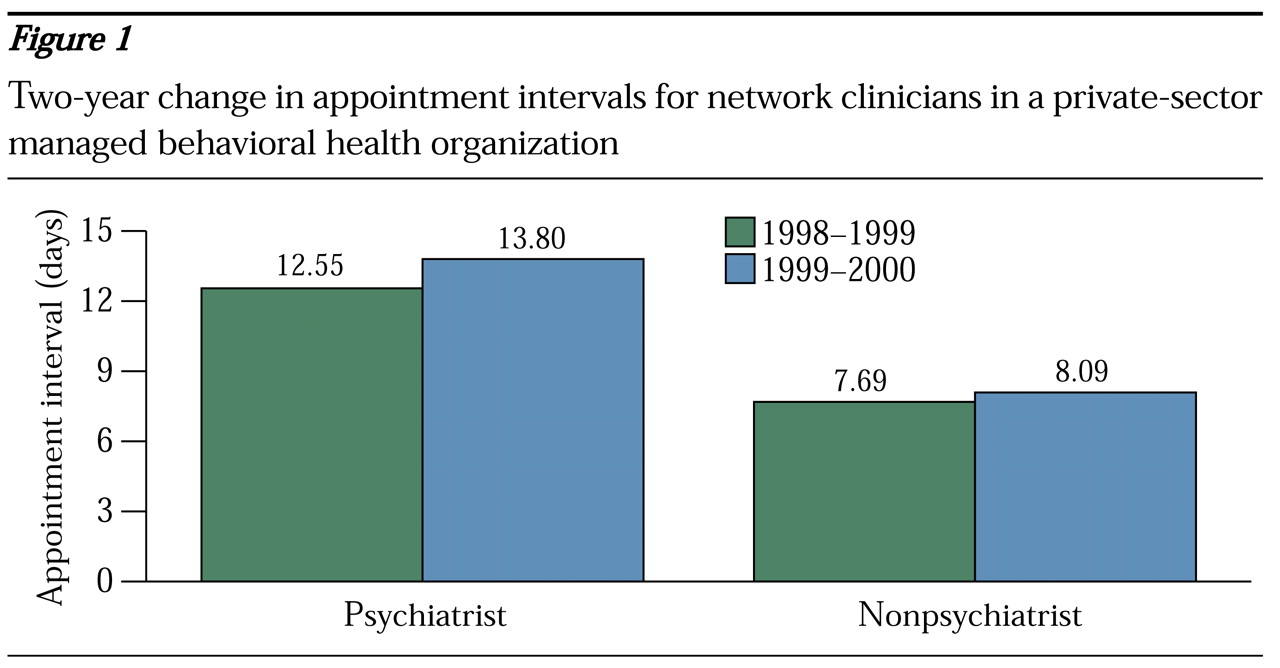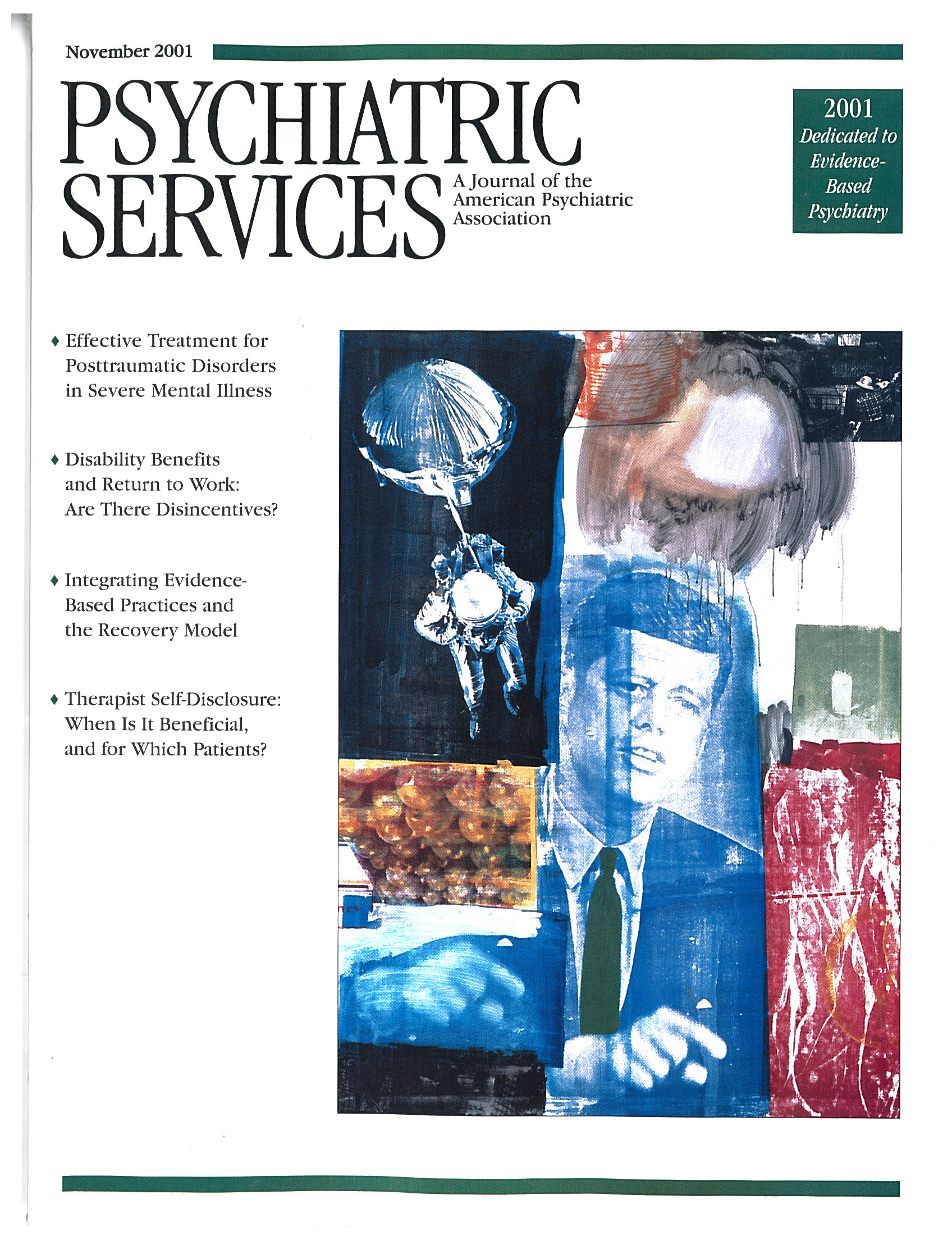United Behavioral Health (UBH) is a national carve-out managed behavioral health organization serving 22 million people in the United States. Although UBH has not changed its referral policies or procedures, there has been a perception that members' access to clinicians in the network has recently declined. We explored this issue by comparing the average number of days members waited for appointments during two one-year periods.
The years selected for comparison were July 1, 1998, through June 30, 1999, and July 1, 1999, through June 30, 2000. Claims data were extracted for these periods, along with the corresponding authorization and the first date of service for each claim. Clinicians' availability was measured as the number of days between an authorization for service and the first date of that service—the appointment interval. The UBH business standard for the appointment interval is ten days.
We have no way of knowing whether a delay was due to the member's delay in calling the clinician or to the clinician's unavailability or whether a long appointment interval was chosen mutually. However, this limitation does not distort trend analyses. Extreme outlier observations—appointment intervals of 90 days or more—were excluded.
For each clinician the number of referrals per year and the average number of days between referral and first appointment were calculated. Claims data for both years were available for 3,117 psychiatrists and 6,331 nonpsychiatric clinicians.
As
Figure 1 shows, members who were referred to psychiatrists waited an average of 12.55 calendar days in 1998-1999, compared with 13.80 days in 1999-2000 (t=-6.12, df=3,113, p<.001). For an appointment with a nonpsychiatrist, members waited an average of 7.69 days in 1998-1999, compared with 8.09 days in 1999-2000 (t=-3.95, df=6,327, p<.001). To test for the influence of demand, a mixed general linear model was used to describe the influence of sample year and standardized number of referrals. The number of referrals was unrelated to the appointment interval.
The average wait between referral and first visit lengthened by 1.25 days for psychiatrists and by .4 days for nonpsychiatrists. Our findings have been confirmed by preliminary results from a UBH quality-monitoring program, in which UBH employees pose as members and call network clinicians to request an appointment. The program found that for calendar year 2000, members would have waited an average of 9.43 days to see a psychiatrist and five days to see a nonpsychiatrist. In the first quarter of 2001, members would have waited 20.4 days to see a psychiatrist and 4.58 days to see a nonpsychiatrist. The appointment interval increased 116 percent for network psychiatrists.
During the first quarter of every year, UBH experiences a large influx of new members transferring from other plans and seeking referrals. Psychiatrists may be highly in demand at that time. However, such demand shows that improved access is needed. No research has found a connection between appointment intervals and quality of treatment, but the lengthening interval at UBH is not good news.


